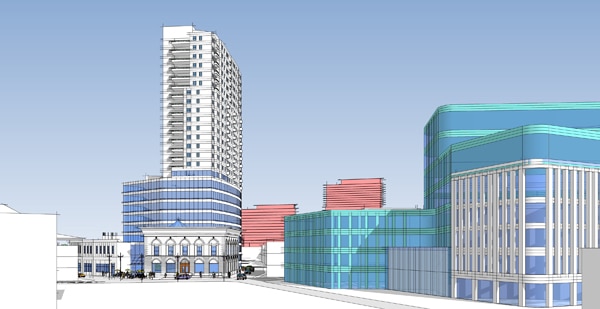To the out-of-market observer, the Boston-area marketplace for commercial real estate development is seemingly reaching the “risk on” phase of the development cycle. In actuality, development trends reveal that Greater Boston has a very healthy balance of supply and demand, with much of that activity being user-driven, creating workspaces uniquely suitable for specific tenants.
Due to this trend in the urban environment that is downtown Boston, many users seek space elsewhere, most notably in the primary suburban office markets.
Enter Waltham: a historical hub of the Industrial Revolution, Waltham has again found itself in the mix of a real estate redevelopment revolution in the Bay State.
When examined from a long-term perspective, businesses have favored suburban office markets for decades. During the first generation of development in these suburban markets, lower land costs and larger spaces to employ hundreds or thousands under one roof drove the trek to the ’burbs. As evidenced by the design and function of these older buildings, style (and certainly lifestyle) was a secondary goal compared to cost and efficiency. These first-generation buildings were occupied by engineers donning short-sleeve dress shirts, ties and pocket protectors, content to eat their bag lunches together in a workplace that was … a workplace.
In recent years, Waltham has again experienced a rapid influx of both residential and commercial tenants, due to its affordable proximity to downtown Boston and Cambridge. This is no secret to real estate developers, as Waltham not only experiences continued interest, but also continued investment in both ground-up development, but more commonly, redevelopment and revitalization of rundown office and industrial sites.
This second generation is focused on redesigning and redeveloping these prime suburban market areas within the well-established theme of the powerful urban/suburban lifestyle or work/play trend.
From the Waltham Watch Factory to Wyman Street, Main Street to Market Place, major companies such as Clarks, Market Basket, Care.com, Vistaprint, Thermo Fisher and Stride Rite – to name a few – are accounting for hundreds of thousands of square footage recently developed in Waltham.
Conscious of the invaluable assets that entice major businesses to move-in, savvy developers understand Waltham’s prime location due to its close proximity to downtown Boston, major thoroughfares (Route 128 and the Mass Pike) and affluent suburban communities. What has since advanced is newly created office buildings with the work/live/play space and programming that evokes the same entrepreneurial vibe of downtown Boston and Cambridge, drawing bigger name brands to the suburbs.
Second Generation Suburban Market
This progression and overall health of the market has led to other suburban office market development in close proximity to Boston. Take Burlington: closely located to I-95, Burlington became an early adapter to offering urban amenities in a suburban setting, led by the likes of Nordblom Co., New England Development and others. In recent years, major companies spanning a vast array of industries have moved to Burlington, creating campus-like communities on corporate grounds.
Joining in the trend of suburban office park redevelopment is National Development, which has re-introduced the New England Executive Park as “The District.” The park is currently being converted from a sleepy, old office park of the first generation to a vibrant “work, play, stay” destination for the second generation of suburban market development. Office buildings and retail amenities are thoughtfully paired and connected with walking paths, sidewalks and open spaces, maximizing the appeal of the once-boring suburbs. The innovative designs of these suburban spaces have accelerated the cycle of new development and redevelopment, boosting rents and raising not only the profile, but also the benchmark of development in the suburban markets.
Following this trend, market observers can anticipate the continued redevelopment of select locations like the former Postal Service site in Waltham, and the Cubist/Merck campus in nearby Lexington. Further, with the limited supply, and recent increases in market rents for large-block users of Class A office space, we should expect that developers will be able to land the sizeable “bell cow” tenant that will facilitate new development at Bear Hill and the various Winter/Wyman locations that are in the queue. There is little doubt that this new generation of locations and the growing amenity base will solidify Waltham and the Route 128 market as a national best-in-class suburban market.








